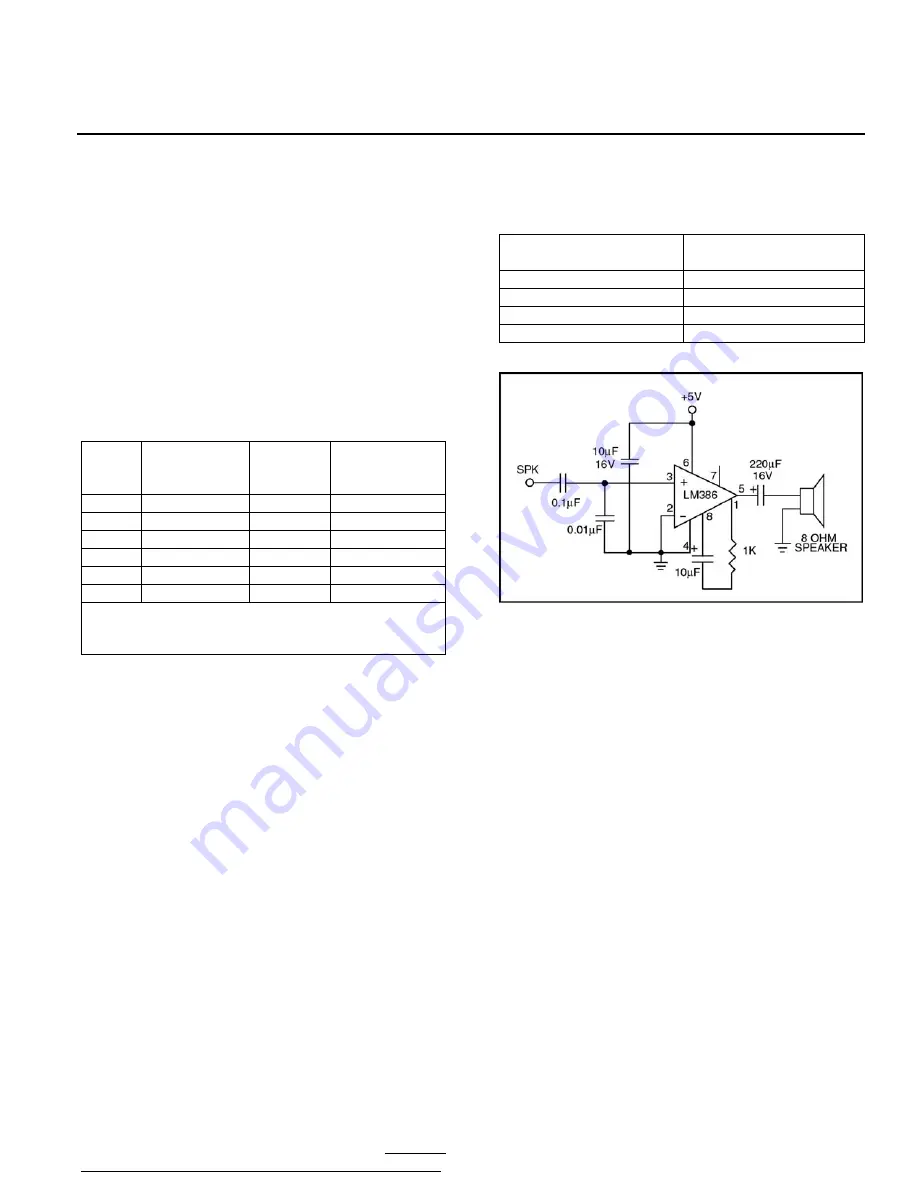
Cermetek Microelectronics, Inc.
High Speed Modem and FAX Family
2003 Cermetek Microelectronics, Inc.
Page 4
Document No. 607-0003 Revision K3 (09/03)
CH1794
300, 600, 1200, 2400, 4800, 7200,
9600, 12000, 14400, 19200, 38400, and
57600bps.
CH1799
300, 600, 1200, 2400, 4800, 7200,
9600, 12000, 14400, 16800, 19200,
21600, 24000, 26400, 28800, 38400,
57600, and 115200bps.
CH2056
300, 600, 1200, 2400, 4800, 7200,
9600, 12000, 14400, 16800, 19200,
21600, 24000, 26400, 28800, 38400,
57600, 115200, and 230400bps.
The data formats in Table 1 are recognized by the HS
Modem family of products.
Table 1. Data Formats Recognized by HS Modem
Family.
Parity
Data Length
(No. of Bits)
No. of
Stop
Bits
Character
Length
(No. of Bits)
None 7
2
10
Odd 7
1
10
Even 7
1
10
None 8
1
10
Odd 8
1 11*
Even 8
1
11*
*11 bit characters are sensed, but the parity bits are
stripped off during data transmission in Normal and
Error Correction modes.
The HS Modem can sense data with mark or space
parity and configures itself as described in Table 2.
The HS Modem is trained to a selected speed with an
AT<CR>
training sequence. Thus, the DTE to modem
serial interface speed can be set independent of the
DCE or line carrier connecting speed (with minor
restrictions, see the
AT+ MS
command). This allows
greater flexibility when selecting DCE line carrier
modulation speed thereby affording the user with
optimum data throughput performance. To maximize
effective modem data throughput speed, the DTE to
modem serial interface speed should be set to the
highest speed available without invoking the use of the
HS Modem’s built-in flow control. Although flow
control facilitates communication with higher speed
modes by the DTE, use of flow control causes an
overall throughput data rate penalty.
Voice/Tone Injection Port.
The HS Modem Family
provides pin T1 to allow the user to share the PSTN
line interface associated with the modem for voice and
DTMF applications. Figure 5 contains a schematic
which uses a 5 Volt single supply operational amplifier
and indicates one possible configuration for voice/tone
utilization.
Refer to Cermetek Application Note #170, 2-4 Wire
Converter for Use with CH179X and CH2056 Modems,
for an alternative voice/tone implementation that
utilizes dual supply operational amplifiers.
Table 2. HS Modem Auto Configuration Based on
DTE Configuration
.
DTE Configuration
HS Modem
Configuration
7 mark
7 none
7 space
8 none
8 mark
8 none
8 space
8 even
Figure 3. Speaker Control Circuit.
All HS Modem products are designed with pin T1
coupled directly to the internal DAA. When using the
HS Modem in data mode, T1 should float and be
disconnected from any potential signal because any
signal on T1 during data operation will affect the HS
Modem’s output. If T1 is being asserted from another
application, use a relay or zero impedance switch to
disconnect T1 when in data mode.
When voice and data are both being used, and the T1
pin is active, it is typical for voice communication to
precede data communication. In this case, the
following commands should be used to configure the
HS Modem to allow for full utilization of the Voice/Tone
injection feature. These commands disable auto-
answer and eliminate hang-up due to lack of carrier
signal.
1. Enter:
ATS0=0<CR>
2. Enter:
ATS7=255<CR>
3. Enter:
ATS10=255<CR>
The following command sequences illustrate
implementation of common voice/tone port
applications.
1. To answer a voice call:
(a) Enter:
ATH1<CR>
(b) Switch local voice source into T1
(c) Begin Voice Conversation





































